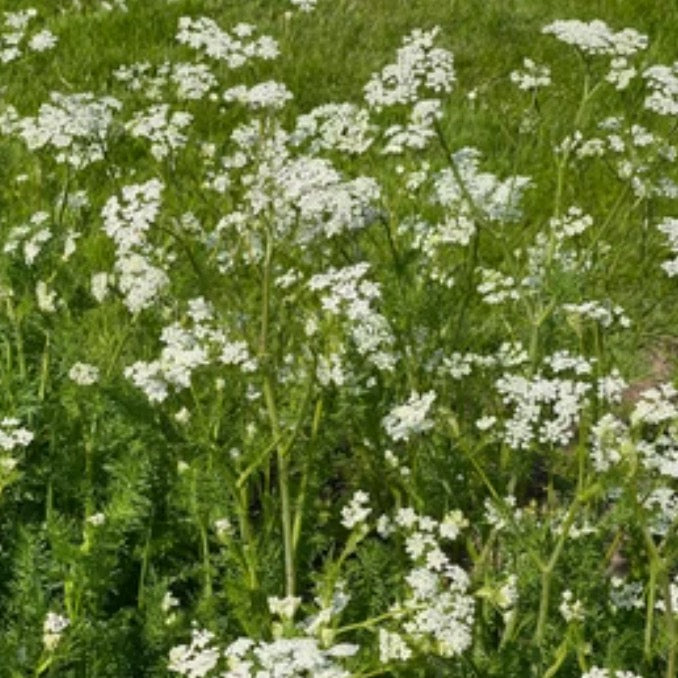This graceful feathery annual was cultivated by the Egyptians in 1500 BC. The Pimpinella anisum seeds can be used whole or crushed in baked goods, pies, applesauce, or cream cheese. Toss the flower or leaf into fruit salads, or use as garnish.
One of the most ancient herbs, anise is native to Southern Europe and the Mediterranean. In ancient Palestine, anise was highly valued and used as a form of currency for payment of taxes. In the United States, anise has been grown since the fourteenth century. In England in 1305, anise was so popular as a spice or medicine that King Edward I put a tax on it to raise money to repair London Bridge. Anise seeds have a wide variety of medicinal uses and are rich in volatile oil, flavonoids and other important nutrients. The distinctive flavor of anise can be found in licorice as well as certain kinds of cookies, bread, sausage, and cheese; almost every culture has a special confection that contains this sweet herb.
Common Names: Burnet Saxifrage
Latin Name: Pimpinella anisum
Species Origin: Mediterranean, Southeast Asia
Type: Open Pollinated, Heirloom, Warm Season
Life Cycle: Annual, Tender Perennial
USDA Zones: 4, 5, 6, 7, 8, 9, 10, 11, 12
Seeds per Ounce: 12,000
Planting Method: Direct Sow
Sunlight: Full Sun
Height: 24 Inches
Color: White
Bloom Season: Blooms Late Summer, Blooms Early Fall
Uses: Attracts Butterflies
GROWING INFORMATION
Sowing:
Since anise does not take well to transplanting, it should either be direct sown or grown as a container plant. When the soil reaches a temperature of 68 degrees F, plant the seeds in full sun and well drained soil, 1/4" deep and 12-15" apart in rows 2' apart. For companion planting benefits, plant anise with coriander; this improves the germination and growth of the anise.
Growing:
Anise needs little attention once established. Keep the ground weed free, and water the plants if the soil dries out completely.
Harvesting:
Harvest fresh leaves and flowers as needed. For drying, cut the entire plant before it flowers and hang it upside down to dry.
Seed Saving:
Harvest the seed heads individually as soon as they begin to turn brown, and spread them out to dry in a protected location out of direct sunlight. Thresh out the seeds by rubbing or shaking the heads, and remove as much chaff as possible. Store the anise seeds in a cool, dry place.
ANISE GROWING GUIDE

